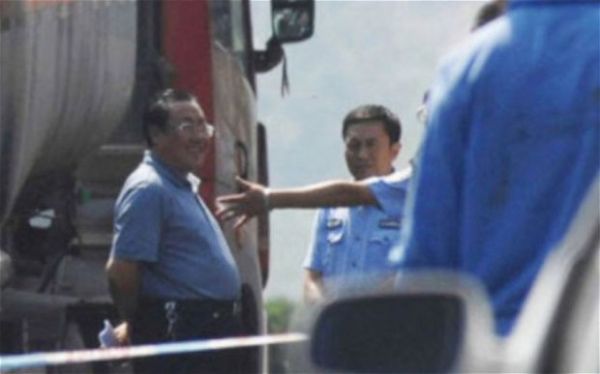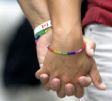


Yang Dacai at the scene of a deadly accident
By Shen Nianzu (沈念祖)
Issue 631, August 5, 2013
Nation, page 10
Translated by Tian Shaohui
Original article:[Chinese]
Government officials these days are increasingly feeling scrutinized whenever they appear in public, worrying that one small slip up could be photographed and spell their demise.
Perhaps the most famous cautionary tale came last year from Yang Dacai (杨达才), former head of Shaanxi Province's Bureau of Work Safety. At the scene of a bus accident that had killed 36 people, Yang was photographed laughing with other cadres. This alone was bad, but the worst was yet to come.
After being infuriated by Yang’s failure to give the scene the solemn respect it deserved, online vigilantes took to scrutinizing dozens of old photos online. They discovered many that showed Yang wearing luxury watches costing far more than his salary should allow. Soon after, he was dismissed from his post.
Leaders are now becoming very sensitive about how they’re photographed. “It’s always hard to take news photos, but it’s even harder to take photos of officials,” said Gao Yiming (高一鸣), a press photographer for a Party paper in a Fujian Province prefecture-level city. “The key point is to remember politics.”
Li Wenbin (李文斌), a press photographer for a Party paper in Jiangxi Province, agrees. “You should be cautious and shoot from angles that produce a satisfying photo leaders will approve of,” he said. “Otherwise it may lead to a political incident."
Before being published, all pictures are examined not only by the newspaper's editors, but also by the local government’s public relations office. Several photographers from Party-affiliated papers told the EO of guidelines they’ve informally learned or been given directly by local governments regarding how they should and shouldn’t photograph leaders. The following is a list of some of those key points and taboos.
Key Points
1. Whenever a new group of leaders take office, press photographers for local Party papers will receive a list. They’re asked to remember the leaders’ names, faces and most importantly, their ranking. Top leaders should be photographed most of the time. These photographs are a key indicator of who’s in power. If they suggest a ranking that’s incorrect, it’s all in vain.
2. The higher that officials are ranked, the more photo requirements they’re likely to have. When leaders aren’t happy, it’s common for Photoshop to be used to clean up images or clear out superfluous people.
3. Conferences, meetings and ceremonies are a great chance to enhance leaders’ images. Photographers are asked to shoot in such a way that guests don’t appear to overshadow officials. One example was in 1972 when U.S. President Richard Nixon visited China. Before the visit, Premier Zhou Enlai asked Du Xiuxian (杜修贤), a photographer for Xinhua News Agency, to make sure the photos indicated that Nixon was the one to anxiously initiate the handshake with Zhou.
4. Photographers are also asked to remind officials to straighten their hair, tie or suit when pictures are being taken. They should also help stage photos with flattering postures and gestures.
Taboos
Photos in the following cases are banned from public release since they’ve drawn so much negative attention.
1. Photos showing officials' belts, watches, high-end glasses and cigarettes are barred. Similarly, photos showing officials drinking liquor or burning incense cannot be released.
2. Photos that show others holding umbrellas for leaders cannot be released. However, photos showing leaders holding their own umbrellas are encouraged.
3. Photos taken from behind or above should be avoided since they diminish the leader’s stature and presence. Photos taken from a low angle looking up at the leaders are encouraged.

